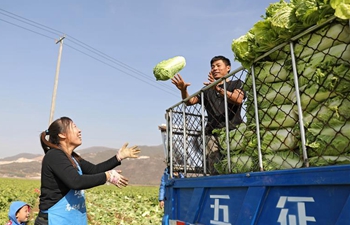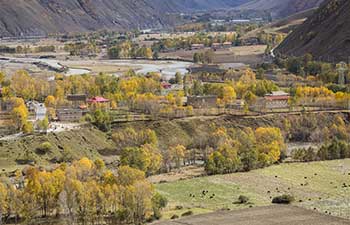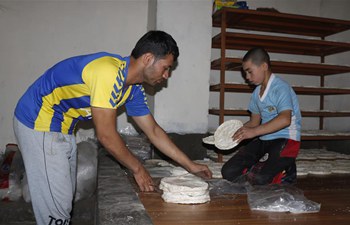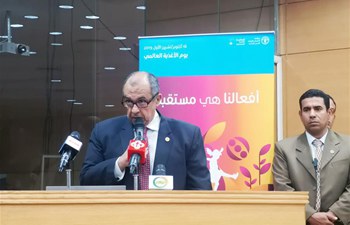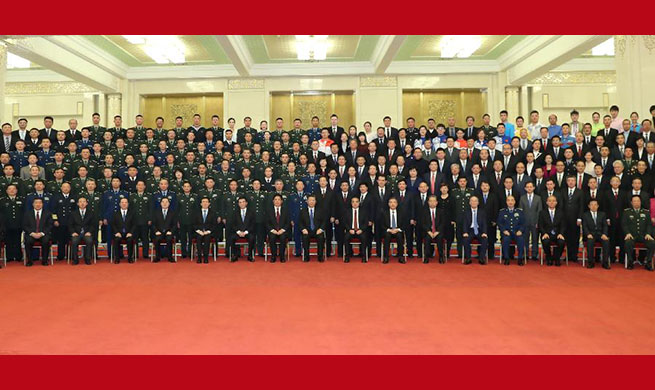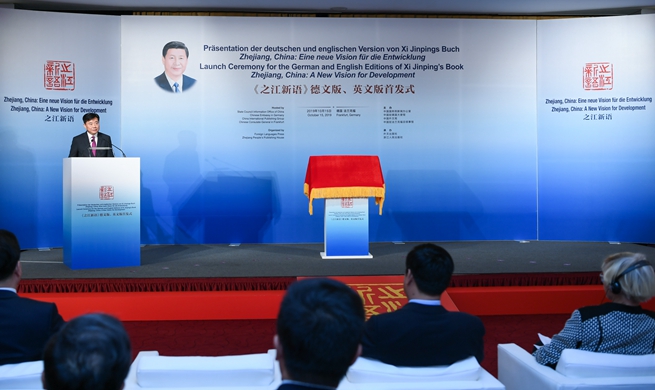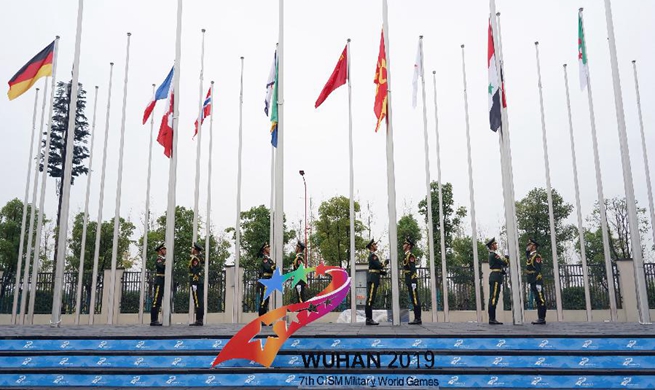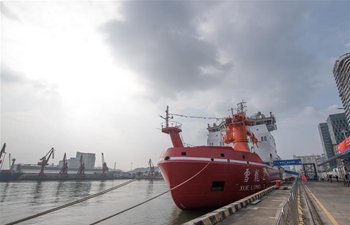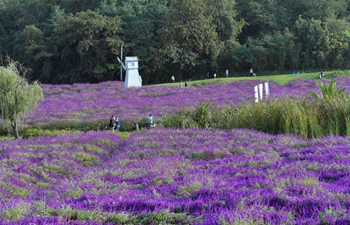TOKYO, Oct. 17 (Xinhua) -- Since a deadly typhoon battered wide swathes of Japan last weekend, with the death toll rising to 77, government officials are starting to better gauge the full scope of the damage left in the wake of the devastating storm.
Typhoon Hagibis, the most powerful to hit Japan in decades, pummeled embankments and levees, and caused numerous rivers to overflow and homes to collapse.
Coupled with record rainfall and powerful gusts of wind, thousands of houses were flooded, with the figure standing at 33,000 homes still inundated as of Thursday, with the internal affairs ministry adding that 1,700 homes had been completely or partially destroyed by the deadly typhoon.
According to the land ministry on Thursday, it has been confirmed that more than 23,000 hectares of land on Japan's main island of Honshu have been flooded, with the vastness of the flooding far more serious than the 18,500 hectares that were affected when torrential rain lashed western Japan last year, killing more than 200 people.
More than 4,000 people still remain displaced as a result of Typhoon Hagibis and remain in temporary evacuation shelters taking refuge in 13 prefectures across Japan.
They are bracing for more chilly nights, while sleeping on thin mats, with the mercury tumbling to season-lows well below 5 degrees Celsius as logged on Thursday morning and is expected to drop further in some northeastern areas.
Adding to the suffering of the evacuees and potentially causing more fatalities, Japan's Meteorological Agency (JMA) has warned of further downpours from Friday through Saturday in regions in eastern and northeastern Japan.
Abe said the government would continue with a plan to fully survey the affected regions with an aim to determining whether they could be designated as "suffering from a serious disaster," which would enable the government to dispatch further funds to those areas in particular.
The government has already allocated 710 million yen (6.5 million U.S. dollars) in reserve funds to finance relief efforts.
Japanese Prime Minister Shinzo Abe visited hard-hit Fukushima Prefectures on Thursday, saying he wanted to grasp the full extent of the damage for himself and hear the opinions of the affected people.
Abe said he wished to hear the opinions and needs of those who are suffering in the wake of the typhoon and to ensure they have all the relief goods they need.
Japan's northeast region, yet to fully recover from a massive earthquake-triggered tsunami in 2011, was particularly hard hit by Typhoon Hagibis, with 27 deaths registered in Fukushima alone, making it the region with the highest death toll among all of Japan's 47 prefectures.
Reserve Self-Defense Force (SDF) members have been called upon, for the first time since the earthquake and tsunami disaster in 2011, to join around 31,000 members of the SDF in helping emergency supplies get to those in need, as well as other vital relief work, the Defense Ministry said.
